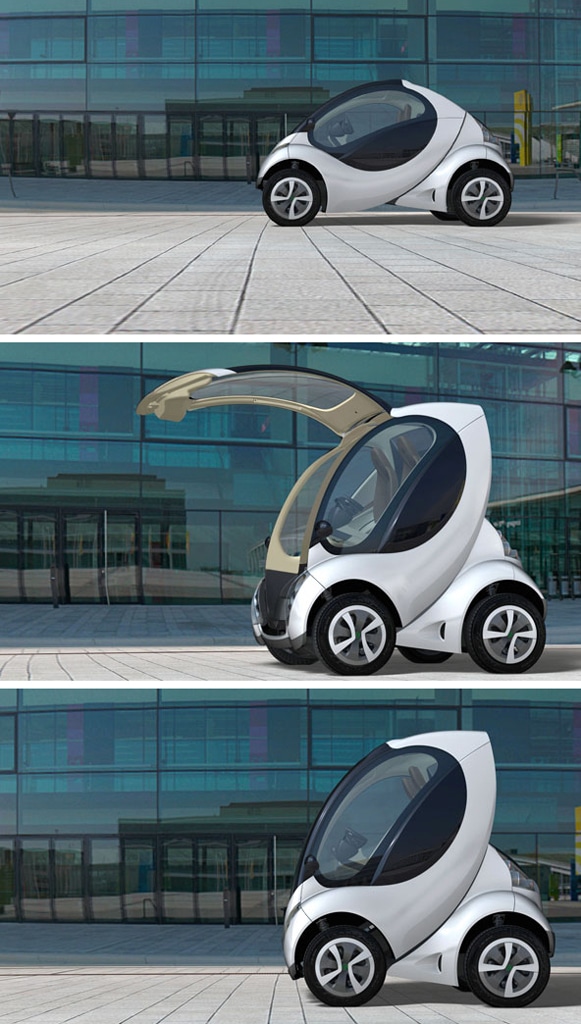In 1970s, American director Stanley Kubrick began groundwork on a
film with a futuristic idea. At that point in time computers failed to produce
effective science fiction imagery. He shared his thoughts on the topic with
American science fiction director Stephen Spielberg and in 2001, Artificial
Intelligence was released. Sadly, Stanley Kubrick had passed away in 1999.
Another American story sharing resemblance took place on the north-eastern
coast. Beginning in 2003, urban designer William John
Mitchell developed an idea for urban mobility at Massachusetts Institute of Technology’s MIT Media Lab. The idea was to create
“Mobility-on-Demand” service. This was also the year when crude oil prices took
off on a four year flight towards energy crisis. Planned as an all electric
urban mobility automobile, the CityCar was born as Hiriko in Spain translating
to ‘urban’, in 2010.
The 100% electric vehicle is partially a
robot. The wheels operate by individual motors making them turn 360 degrees.
This enables optimum utilization of road space while parking and has zero radiuses
turning circle. Once parked the car folds. The fold enables three such cars to
park in place of one midsized automobile. This is a first of its kind in the
smart car space. The vehicle is meant for intercity conveyance and has capacity
of 120 kilo meters on a single charge. On a trial basis the first 20 vehicles
are set for launch in 2013 within Basque. It would begin off similar to the
established bicycle sharing programme across Europe; later Hiriko would be sold
at mass level.
Hiriko Driving Mobility is a consortium of seven technology
companies in Basque, Spain. They have worked in creating the first prototype,
released at European Union headquarters in Brussels this January. Massachusetts Institute of Technology is where the initial idea took shape. Though, the
creator Mr. Mitchell passed away in June 2010.
His concept of Mobility-on-Demand originated from MIT Media Lab. It
fulfils point to point travel within a city. The execution from concept to
reality is aimed to benefit those individuals who cannot afford or chose not to
own a personal vehicle. Also, it acts as personal public transport for
passengers in the city and those who come from outside. The next question draws
attention towards supply side efficiency. Within two years from today is it
going to be possible to build infrastructure capable to support rising number
of electric vehicles? One such project is taking place in France. Mister
Vincent Bollore, an industrialist has worked on developing rechargeable
batteries for electric cars. The mayor of Paris, Bertrand Delanöe designed Autolib, a car sharing
scheme. The Bollore Group has won contract to run Autolib. The ‘Bluecar’ under
this programme was launched at Frankfurt Motor Show in 2011 and 3000
such initial launches are going to be supported by 1120 charging stations
within the city.
Keeping supporting funds, income
earned, retail price and cost of such projects aside its most note worthy to
realize that such developments are happening at this point in time. It is a
time where oil prices always seem to be auctioned. This has prompted countries
to act in a way to prevent energy insecurity. Countries around are the world
are playing their role in reducing impact of transport on environment. The
innovative means to reduce transport impact is creating new markets in the
process, new economics and unimagined heights of scientific progress. I am
curious to see what next.









No comments:
Post a Comment